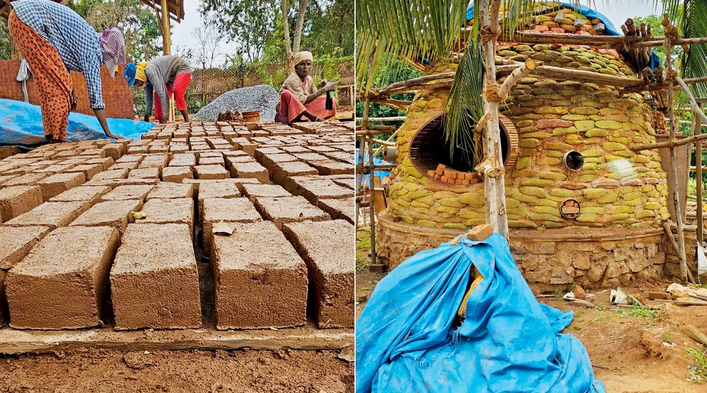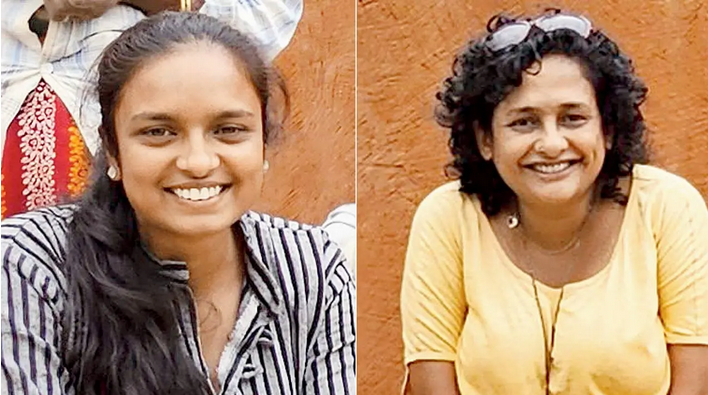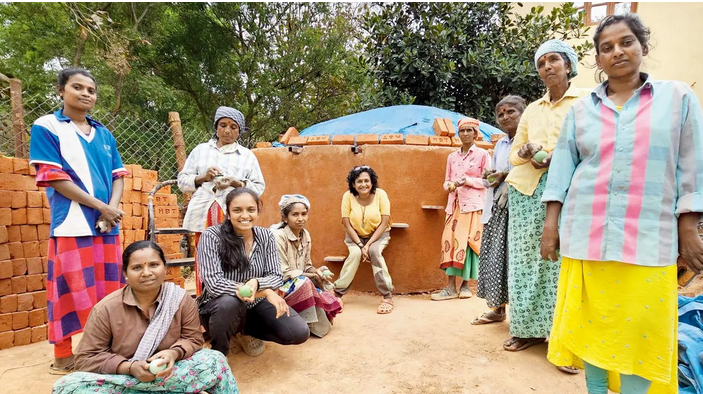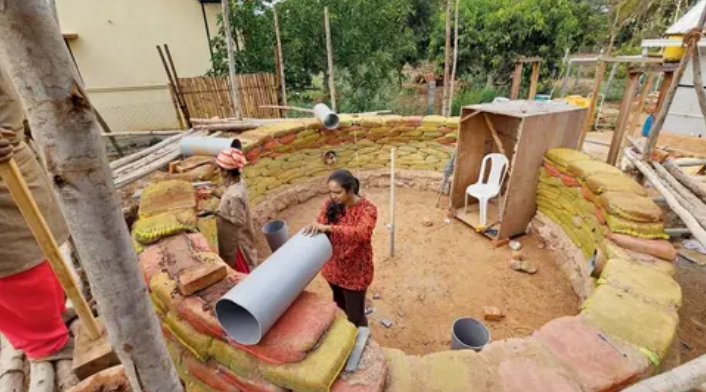Sindhoor Pangal lost her husband about two-and-a-half years ago just before the second lockdown. “We were very close and I was completely heartbroken. He and I were college sweethearts and after his loss, I could not handle the city at all. I wanted to leave. I was looking for a place to heal.”

It was around this time that she bought some farmland outside Bengaluru, India with the intent of building a mud house. While the idea of a mud construction aligned with her eco-conscious lifestyle, there was also something restorative about the process of working with mud. “A mud structure combined my philosophy with my need of the hour. I had to do something creative because grief is so all-consuming that you have to do creative things to learn to carry that grief,” she says. “This was not just a house; this was a journey into a new life for me.”

She decided to find a group of women and teach them how to build The Hobbit House with natural materials. She was fortunate to find passionate participants like Oviya, co-founder of Da India, a design initiative that harmonizes the mastery of native crafts with an artistic vision. Oviya supervises the research and development on the site and has also attended workshops in places such as Dharamshala to equip herself to teach other women.
Lime artisans from Rajasthan and a team from the Northeast adept at building with bamboo have conducted workshops at the site while The Hobbit House‘s own team has offered workshops on earthbag construction, different types of lime plasters and the setting up of lime tanks.
“I have always felt strongly about the need for equal opportunity and empowering women,” Pangal shares, while pointing to practical concerns such as the labor-intensive aspect of natural building. “It felt like a safe, sensible thing to do to have women builders around.” She also points out that natural building is an intricate process that demands mindfulness and an attention to detail, qualities that women are more naturally inclined to have.

Natural building is a slow process that might be called “slow building”. Pangal cites the example of a large cement-free water tank that the team has been building on the site to practice rainwater harvesting, explaining that after using lime, one has to let it cure for a month after which the first layer of plasters has to sit for another month, followed by another layer of plaster. “It took us about four-five months to get our mortar mix right let alone start to build with it,” she says.
Besides rainwater harvesting, Pangal also plans to test out other earth-friendly principles like permaculture farming on the site. As with solar power, she hopes to be reliant on rainwater alone and eventually grow all her produce herself. “I want to present to the world that you can have a fully self-sustaining life on a quarter acre. Seventy to 80 per cent of what I consume I should be able to grow, regenerate, and give back, and make a model out of it.”
You can read the original article at www.mid-day.com

